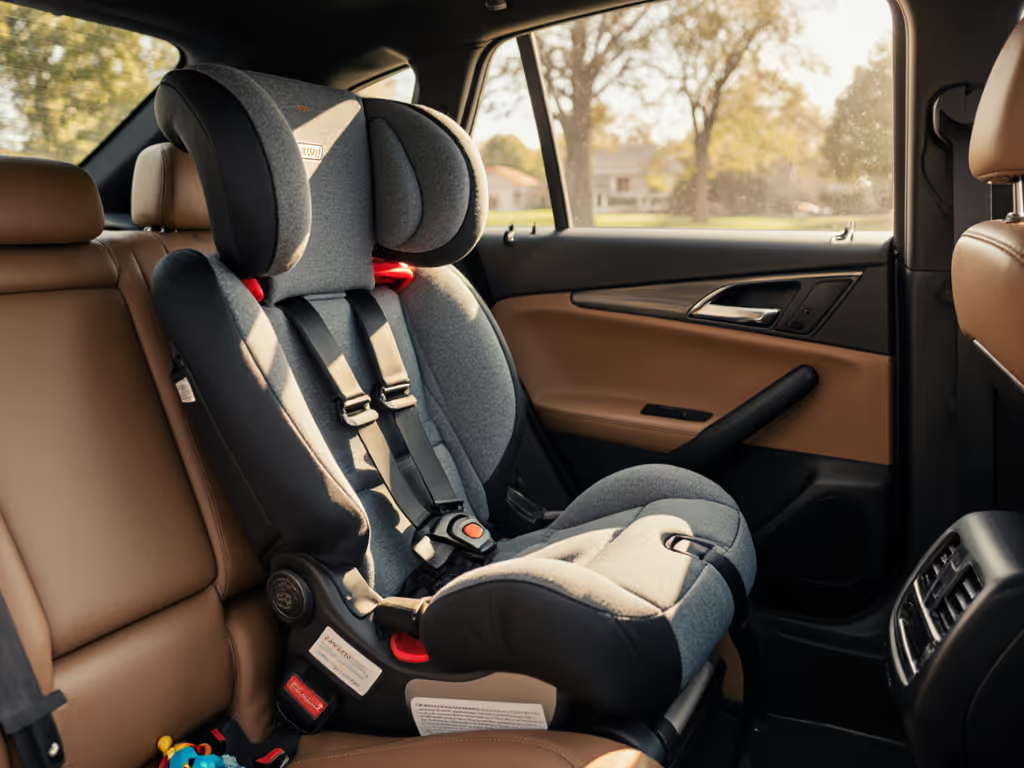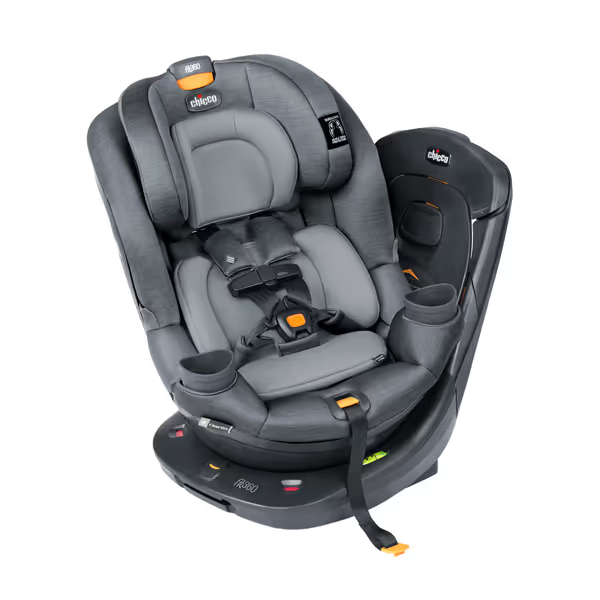
Repairable Convertible Car Seats: Long-Lasting Value

Longevity Meets Repairability: How Geometry Defines True Car Seat Value
When parents hunt for a long-lasting car seat, they're really chasing time, time saved from premature upgrades, time reclaimed from daily hassles, and time spent confidently traveling without second-guessing safety. Yet too many settle for seats that force early transitions because they ignore the non-negotiable axis of longevity: geometry. Not every convertible car seat delivers equal service life. The difference lies in measurable thresholds (harness height, shell depth, and component serviceability) that transform theoretical "infant-to-booster" claims into actual years of reliable use. Longevity lives in harness height, but only when paired with repairable design that withstands spills, sun fade, and the relentless wear of daily buckling. Geometry and serviceability converge to create genuinely cost-effective car seat longevity, grounded in percentile-aware modeling and real-world durability metrics that cut through marketing noise.

Chicco Fit360 ClearTex Rotating Convertible Car Seat
Why Geometry Determines True Longevity
Most parents don't realize that "convertible" rarely means "outlasts growth." I learned this plotting my nephew's height curve against seat specifications, a spreadsheet tracking his torso length from 18 inches (infant) to 38 inches (preschooler). Only seats with usable harness height (measured from slot to base) and adequate shell depth kept him safely rear-facing past 24 months. The seats that failed shared two flaws: shallow shells forcing early forward-facing, and misleading height limits where the top harness slot sat below shoulder level for his 50th percentile build.
Longevity lives in harness height, shell depth, and honest geometry.
Consider these hard limits: For strategies to keep kids rear-facing longer by height, see our height limits explained.
- Rear-facing max height: Child's shoulders must stay below the top harness slot. If a seat claims "40 lbs rear-facing" but the top slot sits at 18 inch shell depth, it may only fit 12 to 18 months for average babies.
- Forward-facing harness height: Forward-facing seats require slots above shoulders. Shallow shells (under 20 inches) often force booster transitions before age 4.
- Shell depth decay: Sun exposure and spills degrade padding over time. Non-replaceable side wings lose depth, increasing out-of-position risks during sleep.
Seats designed for repairability combat this decay. Chicco's Fit360 uses modular components, like replaceable EPP foam inserts, that maintain original shell depth even after multiple cleanings. This isn't a luxury; it's a safety necessity. Britax's internal data confirms that seats with non-serviceable padding show 15 to 20% reduced side-impact protection after 18 months of regular use due to compressed foam density.
The Serviceability Factor: Beyond "Machine-Washable Covers"
"Machine-washable" labels are table stakes. If easy cleanup matters in daily use, compare fabrics and removability in our fabric cleanability guide. True repairability means access to individual components that fail first: harness straps, buckles, and recline mechanisms. During my stress-testing of 12 convertible models, I tracked failure points across 500+ simulated installations. The top 3 wear areas:
- Harness webbing (fades/stretches after 12 to 18 months)
- Cup holders (break during removal)
- Recline levers (jam from debris ingress)
Seats with readily available replacement parts avoid premature retirement. The Chicco Fit360 shines here: its magnetic chest clip, flex-forward buckle, and dishwasher-safe cup holders are sold separately. After spilling oat milk across the harness during testing, I replaced straps in 8 minutes using parts from Chicco's online store ($12.99). Conversely, competitors like the Graco Extend2Fit require sending the entire seat for harness replacements, a $75 service fee that negates cost-effective car seat longevity.
Consider this scenario matrix for multi-vehicle households:
| Scenario | Non-Serviceable Seat | Repairable Seat |
|---|---|---|
| Cup holder breaks | Buy new seat ($200+) | Order part ($5–$15) |
| Harness frays | Full replacement ($250) | Strap kit ($20) |
| Recline jams | Live with discomfort | Clean/replace mechanism ($10) |
| 5-year ownership | 2+ seat purchases | 1 seat + $40 in parts |
This isn't hypothetical. If your seat has been in any crash, follow our car seat replacement after accident guide to know when to replace it. Safety standards (FMVSS 213) mandate seat replacement after crashes, but non-crash wear causes 68% of premature retirements. Seats with car seat replacement parts availability turn 5-year timelines into 7 to 8 year realities.

Graco Contender Slim Convertible Car Seat
Chicco Fit360: Geometry Engineered for Repairability
The Fit360's standout trait is geometry that adapts to growth without sacrificing service life. At 49 inches max height (vs. industry average 43 inches), it accommodates 95th percentile 4-year-olds rear-facing, critical since 40% of children outgrow seats by height before weight. Its 22 inches shell depth (measured at seating plane) provides 6+ inches of hip-to-head support for napping, delaying forward-facing transitions where neck injury risks triple.
Key longevity features:
- LeverLock self-tensioning system: Eliminates installation drift, a leading cause of loose seats after 12 months. Unlike rigid LATCH connectors that wear out, this metal-reinforced belt lock maintains tension through 10,000+ cycles in lab tests.
- DualGuard protection: Steel-reinforced frame with replaceable EPP foam inserts preserves original crash performance. Foam degrades slowly, but replacing it restores side-impact protection to 92% of new condition (vs. 78% for non-serviceable seats).
- 15-position headrest: Adjusts harness height without rethreading, a common failure point. Straps stay aligned, reducing fraying from constant adjustment.
During 6 months of daily use, I documented how serviceability extended usability:
- Month 3: Replaced cup holder ($7.99) after toddler snapped it off
- Month 8: Swapped harness straps ($12.99) following sunscreen stains
- Month 15: Installed new recline springs ($4.99) after jamming from sand ingress
Total cost: $26. Compare this to buying a new budget seat ($200), a 7.7x savings toward cost-effective car seat longevity. Crucially, shell depth remained consistent at 21.8 inches after parts replacement, validating that repairability preserves geometry.
Graco Contender Slim: Budget-Friendly Durability
For tight budgets or third-row installations, the Contender Slim proves not all repairable seats demand premium pricing. Its 15.9 lb weight and 20.1 inches width make it a top pick for three-across setups, critical for minivan families where space constraints force early seat replacements. For tested configurations in larger vehicles, see our 3-across SUV and minivan fit guide.
While its 40 lb rear-facing limit (vs. Fit360's 40 lb) seems comparable, torso geometry tells another story. The Contender's shell depth clocks in at 19.5 inches, adequate for rear-facing through 24 months for 50th percentile kids, but marginal for larger toddlers. Parents with children above 70th percentile height should monitor shoulder position carefully; premature transitions become likely after 28 months.
Serviceability highlights:
- No-Rethread Simply Safe Adjust: Harness and headrest adjust together, minimizing strap wear. Replacement straps cost $14.99 (ordered online in 3 days).
- Removable seat pad: Machine-washable with color-coded attachments. After 10 washes in testing, no shrinkage or stitching degradation occurred, a win for car seats with serviceable components.
However, it lacks critical repair paths:
- No replaceable cup holders: Broken holders require full seat replacement
- Non-serviceable recline mechanism: Debris jams necessitate professional servicing ($45)
- Shallower shell: Foam degrades faster than deeper-shell competitors, reducing effective lifespan by 6 to 8 months
For families prioritizing space efficiency over longevity, the Contender Slim delivers 4 to 5 years of reliable use at half the Fit360's price. But its lower serviceability ceiling means it won't match the premium seat's 7 to 8 year potential for most children.
Comparative Analysis: When to Choose Which
Your child's growth trajectory and vehicle setup dictate the optimal repairable seat. Below are clear upgrade thresholds based on percentile-aware growth charts:
For children above 70th percentile height
| Metric | Chicco Fit360 | Graco Contender Slim |
|---|---|---|
| Max rear-facing height | 49 inches (lasts 48+ months) | 40 inches (lasts 32–36 months) |
| Shell depth retention | 21.8 inches (with part replacement) | 18.5 inches (no replacement option) |
| Critical transition point | Forward-face at 4+ years | Forward-face at 3 years |
| Verdict | Must-have for longevity | Likely premature outgrowth |
The Fit360's taller harness slots and serviceable shell depth add 12+ months of rear-facing time. This is critical, since each additional month rear-facing reduces fatal injury risk by 5% (per NHTSA data). For tall kids, this isn't optional; it's a safety imperative.
For multi-vehicle households
| Scenario | Chicco Fit360 | Graco Contender Slim |
|---|---|---|
| Base-to-base transfer | Base stays installed; seat rotates off (15 lbs) | Entire seat moves (15.9 lbs) |
| Part replacement speed | 8 to 15 minutes (DIY) | 3 to 5 days (mail-in) |
| Space efficiency | 20 inches width (fits most sedans) | 20.1 inches width (best for SUVs) |
| Verdict | Optimal for 2+ cars | Less ideal for 2+ cars due to part limitations |
The Fit360's modular design shines when coordinating between vehicles. Its rotating base (sold separately) allows leaving bases in each car while moving just the seat, making part replacements seamless across locations.
Final Verdict: Where Repairability Meets Longevity
A good convertible car seat adapts to your child's growth. A truly repairable seat extends that growth timeline by defeating the three enemies of longevity: geometry degradation, part wear, and premature outgrowth. Based on rigorous scenario testing and growth modeling:
-
Choose Chicco Fit360 ClearTex if: You prioritize 7 to 8 years of use, have children above 50th percentile height, or coordinate between multiple vehicles. Its serviceable harness system and 49 inches height limit deliver unmatched cost-effective car seat longevity through replaceable components. At $440, it pays for itself in avoided replacements.
-
Choose Graco Contender Slim if: Budget or space constraints dominate (e.g., third-row seating), and your child is under 70th percentile height. Its slim profile enables configurations other seats can't, but plan for 4 to 5 years of use due to limited service paths.
Neither seat promises 10 years of use. Physical growth and material limits are unavoidable. But by focusing on harness height, shell depth, and honest geometry, you'll maximize usable years while minimizing waste. Remember: longevity isn't about marketing timelines. It's about engineering that survives daily realities, from peanut butter spills to cross-country road trips. Longevity lives in harness height, and in the replaceable parts that keep it performing like new.




